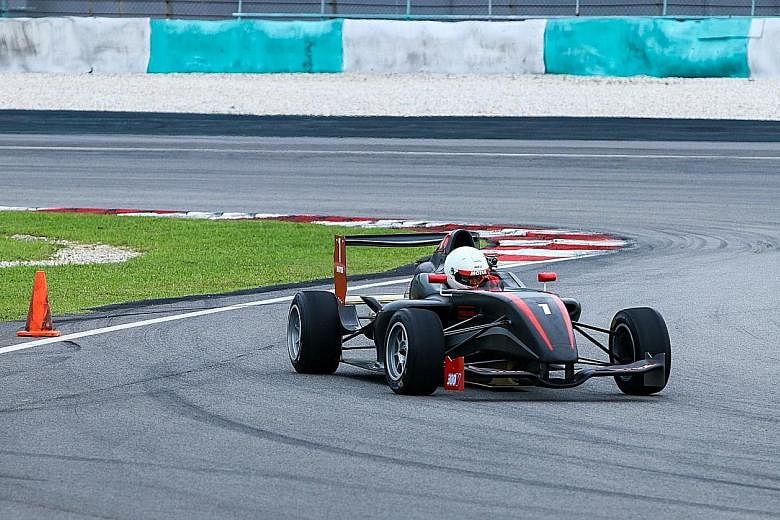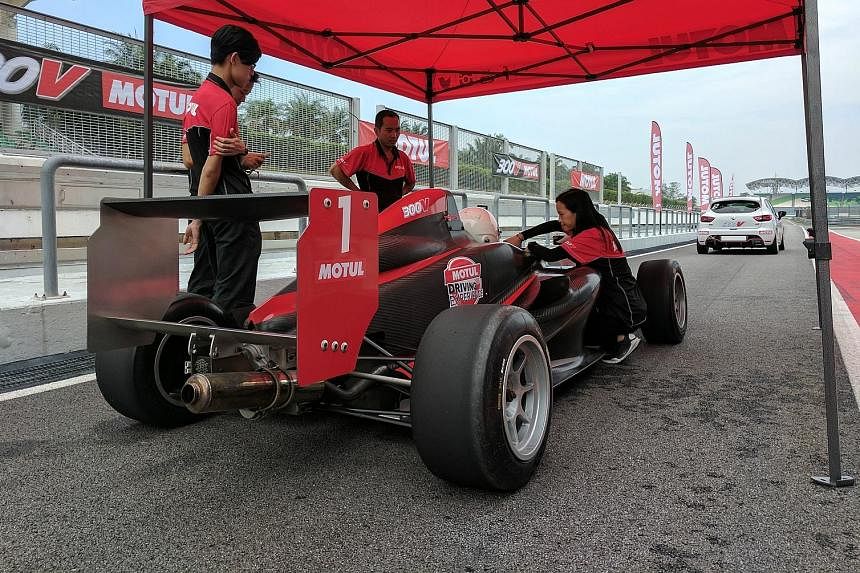I am resting on a pit wall at Sepang International Circuit, located near Kuala Lumpur International Airport, observing a red-and-black Formula Four (F4) car slicing past me on the race track.
I have just had my turn in one of them, courtesy of lubricant manufacturer Motul, which has extensive involvement in motorsports.
Compared with a Formula One car's 800 to 1,000 horsepower, an F4 car seems mild with only 160 horsepower. But this is to serve as an entry point for junior racers into the world of single-seat race car competition.
While an F4 car may not have many more "horses" than a garden- variety Toyota Camry has, these are demented, rampaging horses. The Renault-powered race car zips past me at a breathtaking speed.
And although there are normal road cars that go more quickly in a straight line, what makes a Formula car nearly untouchable on a track, especially this junior one with the comparatively weak engine, is agility. Monumental, neck-snapping agility.
Most of that is down to its weight of a mere 470kg. Every input I give, the car rewards at the speed of thought. Sometimes even faster than I can think. This is a purebred race car built to operate on the narrow precipice of extreme tolerances. In it, I am the weakest link.
That my head is out of the car and my buttocks about a hair's width from the tarmac serves only to amplify the sensory assault.
This is a machine conceived and built with a singular purpose. It has nothing that is not central to the aim of going as fast as possible around a race track. The tyres are racing slicks and the pushrod suspension is tuned to have only as much give as is necessary to maintain tyre contact over the kerbs. You might also have noticed the whopping big wings.
Speaking of those wings, they generate something called aerodynamic grip. In a regular-shaped car, all your adhesion in a corner comes from the tyres. This is mechanical grip. There is a consistent amount.
Aerodynamic grip comes into play, however, when air flows over the wings to generate downforce. You will need speeds attainable only on a race track, though.
Simply put, the faster you go, the more grip you have. Which means that when you approach a corner and the increasingly shrill internal voice of self-preservation is begging you to slow down, it might not be the best idea to do so. This cognitive dissonance is at once terrifying and exhilarating.
Of course, a real racing driver will tell you that there is much more nuance to this craft beyond stomping on the accelerator and holding on for dear life.
It is a beautifully complex and very difficult thing to master. And, today, I can see why people become obsessed and dedicate their lives to it.
If you ever get a chance to drive a single-seat race car, grab it with both hands.
•The writer contributes to Torque, a motoring monthly published by SPH Magazines.


